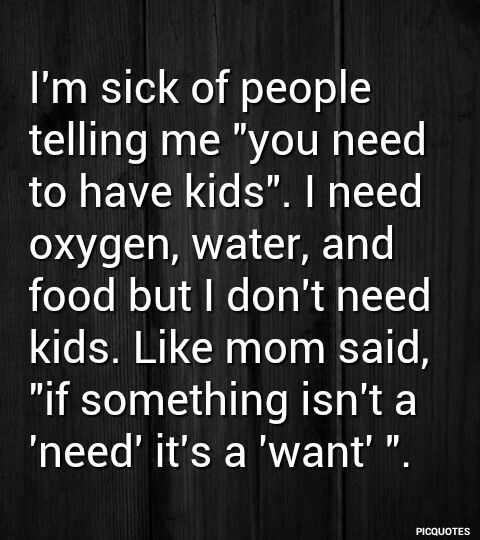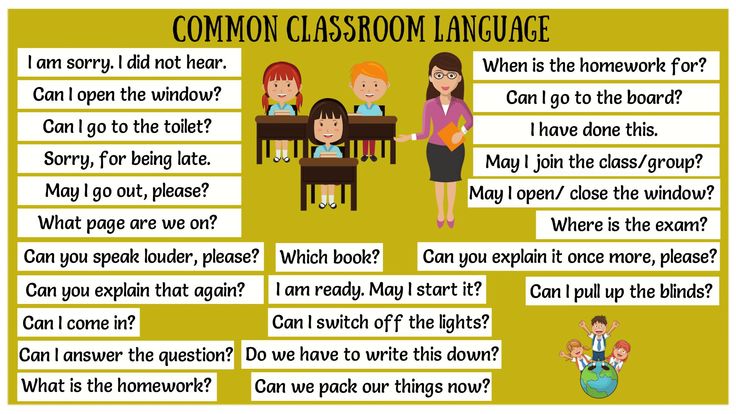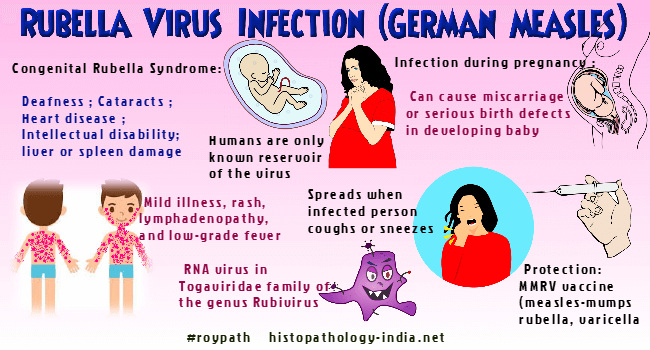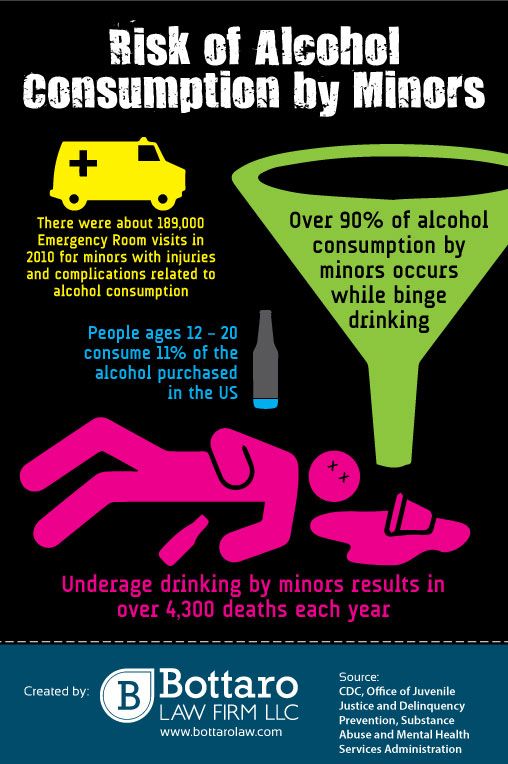How to teach your child thankfulness
Teaching young kids about gratitude
The upcoming holidays are the perfect time to teach young children a very important life lesson about gratitude that will last well past the season.
Gratitude is a high-level concept that can be tricky for toddlers and preschoolers. They are naturally self-focused in their early ages and stages of development. But as children grow with gratitude, they become more understanding of the needs and feelings of others.
So, how do we teach our children to be grateful? One way is to talk with them about being thankful. Not only for material things, but for acts of kindness from others, too.
Tips for Teaching GratitudeHere are some tips from First Things First, gathered from child development experts and websites:
-
Teach them to say thank you to the people who do things for them. That can be their server at a restaurant, a brother or sister who helps them pick up toys, or a friend who gives them a birthday gift.
-
Tell your kids why you are grateful for them. Be specific in letting your children know they are special and loved. For example: ‘I appreciate the way you help your brother tie his shoes.’
-
Talk about the things you are grateful for. This can be done in many ways, from a blessing before dinner to keeping a family gratitude journal.
-
Support a charitable event or organization. Whether you are donating clothes or toys, participating in a food drive, or baking cookies for a new neighbor, talk to children about what those actions mean to those who receive the kindness.
-
Be consistent. Like all skills, gratitude is not learned in one lesson.
Your child’s first five years are a great opportunity to help them develop the skills they need to be successful later in life. Research shows that thankful people are usually more optimistic. They’re also less depressed and stressed. So, when we teach our children to appreciate what they have, and what others do for them, we are helping them become happier, healthier adults.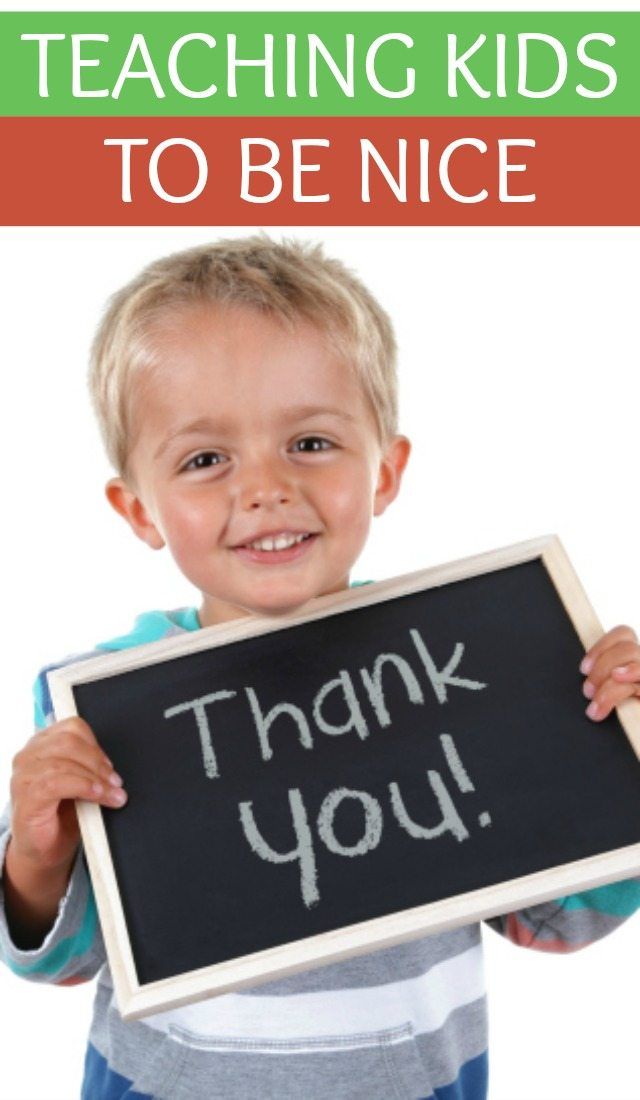
Sesame Street: Feeling Gratitude – Easy strategies that help children focus on reasons to be grateful can really help them get through challenging times.
ZERO TO THREE: Nurturing Gratitude – Many parents worry about children being ungrateful. Here’s what you can do.
- parenting
- child development
- toddlers
- preschooler
- social-emotional development
7 Simple Ways to Teach Your Kids to Be Grateful
Parenting
written by OJUS PATEL
Source: @amylouhawthorne
Teaching gratitude to kids is one of the more challenging parts of parenthood.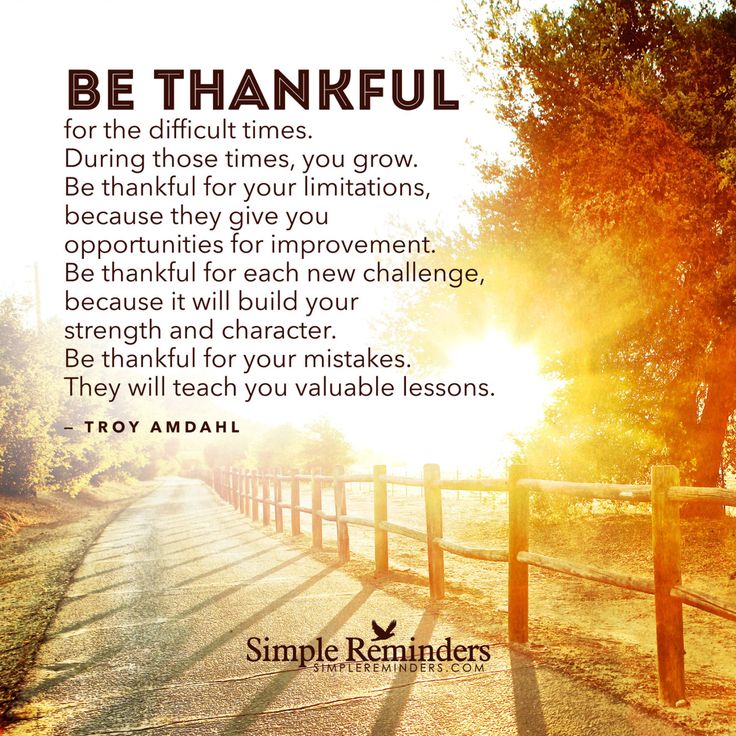 Not only is bring grateful a really abstract concept for young children but, by nature, little ones are pretty self-centered (in a blissfully unaware way, of course). But this is one of the most important things you can teach your kids—practicing gratitude sets kids up to be more sensitive and empathetic to the plights of others, as well as less demanding and entitled overall. Many experts also say that being grateful leads to increased overall happiness (and that goes for us too, fellow adults).
Not only is bring grateful a really abstract concept for young children but, by nature, little ones are pretty self-centered (in a blissfully unaware way, of course). But this is one of the most important things you can teach your kids—practicing gratitude sets kids up to be more sensitive and empathetic to the plights of others, as well as less demanding and entitled overall. Many experts also say that being grateful leads to increased overall happiness (and that goes for us too, fellow adults).
Sometimes we shy away from attempting to teach such a hugely abstract thing at a very young age, but the truth is, our kids are there waiting for us to do so. Babies as young as 18 months can begin to understand that they are taken care of by others and that others do things to make them happy—a foundational concept for learning appreciation. By 2 years old, toddlers can start to articulate things they are thankful for, like Mommy and Daddy or their favorite toys or pets. And, by age 4, little brains can start to understand that gratitude can encompass not only things and people but also acts of kindness and love.
And, by age 4, little brains can start to understand that gratitude can encompass not only things and people but also acts of kindness and love.
Babies as young as 18 months can begin to understand that they are taken care of by others and that others do things to make them happy—a foundational concept for learning appreciation.
Though understanding how to be grateful is essentially a lifelong learning process, there are many ways to begin to instill those qualities in your children in a gentle and relatable way. These simple activities will help you begin the conversation with your kids, and the consistency of those conversations will plant the seeds to grow a truly grateful and happy child.
1. Model gratitude out loud
2. Make a gratitude tree or jar
3. Read books
4. Make a gratitude collage
5. Donate with your children
6. Talk about it
7. Make gratitude part of your day, every day
1.
 Model gratitude out loud
Model gratitude out loud This seems to be an obvious one, but it’s one we all slack on. So much of what we think or feel stays within us, mostly for the better (hello, frustration), but not always. Our children learn the most by what we do and say and they learn just as much from what we don’t do or say. If you’re not actively practicing outward appreciation and gratitude in a way that is accessible and descriptive, there’s a good chance that it will be a much harder concept for your children to learn.
Practicing this is not at all complicated. Simply take time to pause in small moments and say out loud what comes to your heart and head. It can be something small like, “Wow, these trees with changing leaves are just beautiful. Nature is just so stunning, and I love sharing these moments with you.” Or take a brief moment when you’re in line at the checkout counter: “Look at this full grocery cart with all of this delicious and healthy food. We are so fortunate to be able to bring this home to our family.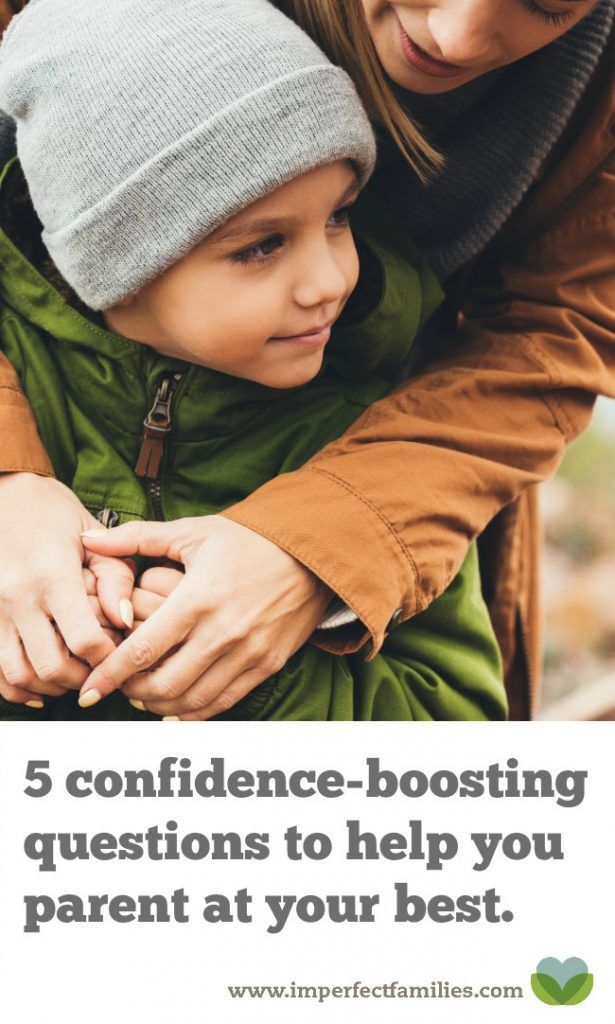 ”
”
It doesn’t take much—saying these things out loud will make it easier for your children to understand gratitude and learn just what things are the ones to be thankful for.
Source: @chantelleenelson
2. Make a gratitude tree or jar
Young kids love visuals, and gratitude trees or gratitude jars are an easy way to keep gratitude at the forefront of your family’s mind on a day-to-day basis. These can be decorated as simply or complex as you want, but the bottom line remains the same. Each day, each person writes one thing they are grateful for on a leaf for the tree or on a note for the jar. Little ones might need a nudge at first, but soon they’ll catch on with examples from the rest of the family. The best thing about this is being able to hear what’s important and meaningful in the hearts of your kids.
And as the leaves and notes begin to add up, you get a powerful visual of all the wonderful things there are to be grateful for.
3. Read books
I don’t think I’ve ever written any sort of parenting article that doesn’t include this advice because it’s a big one. Reading with your kids is so important on so many levels, but one of the greatest advantages your kids will have from being exposed to a variety of wonderful children’s literature is the window they’ll gain into the outside world.
Kids’ worlds are small and consist of the things within their mental and emotional grasp—their family, their friends, their schools, their things. Books allow a perspective outside of that, to people and places they don’t normally see or hear of. Books also teach through visual images and storytelling, which is easier for kids to understand and relate to their own lives and experiences.
Some of our favorite books that teach gratitude: All the World, Andy and the Lion, Bear Says Thanks, The Thankful Book, and Those Shoes.
4. Make a gratitude collage
Similar to a gratitude tree or jar, a collage can be a great visual for your child in helping to see the goodness in their life.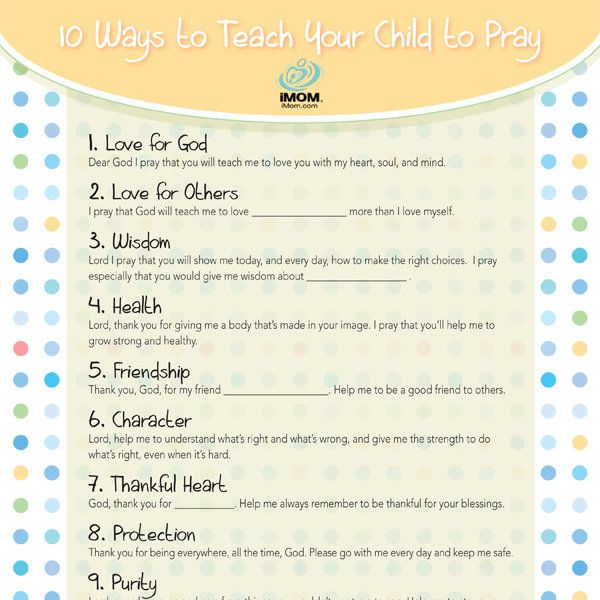 Simply gather some printed photos, magazines, and catalogs, and have your child cut (or cut for them as they point) out things that they appreciate in their life and are grateful for.
Simply gather some printed photos, magazines, and catalogs, and have your child cut (or cut for them as they point) out things that they appreciate in their life and are grateful for.
I learned quite a bit while doing this with my older son—as we talked and he chose items like healthy food and books and puzzles, I could see what was important to him and what he learned from me even when I thought he wasn’t watching. We hung the collage in his room—right where he can see it every day and night.
5. Donate with your children
Making a point to donate grown-out clothes and gently used toys is a simple way to make a big difference. Help your kids go through their things and put aside something that might make another little child happy or that another child could use.
Not only will this help clear the clutter, but it also begins to instill a sense of generosity and a separation of happiness and things. It allows them the experience of letting go and giving at the same time.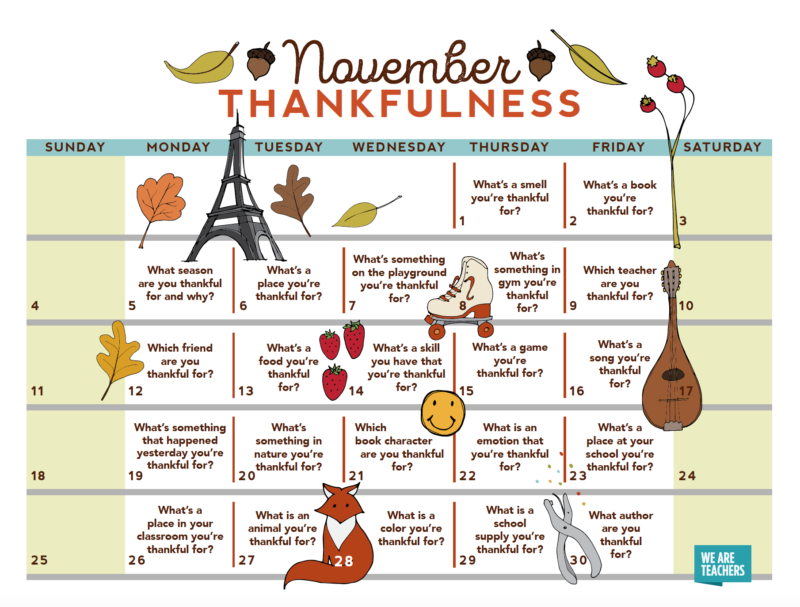
If your children are older, talk them through the process of choosing a place to give to. You can discuss the joy other kids will get in using the new-to-them items, as a way to encourage connectivity and empathy.
Source: @paigechristensen
6. Talk about it
Be open about gratitude and help them talk through their experiences. The Raising Grateful Children project at UNC-Chapel Hill notes that gratitude has four parts, but parents rarely teach them all. They offer the NOTICE-THINK-FEEL-DO model:
- What do we NOTICE in our lives for which we can be grateful?
- How do we THINK about why we have been given those things?
- How do we FEEL about the things we have been given?
- What do we DO to express appreciation in turn?
By prompting questions surrounding these notions in conversations with your children as they go through life, experience things, and receive various gifts, you can help to increase their emotional and mental capacity for appreciation and gratitude.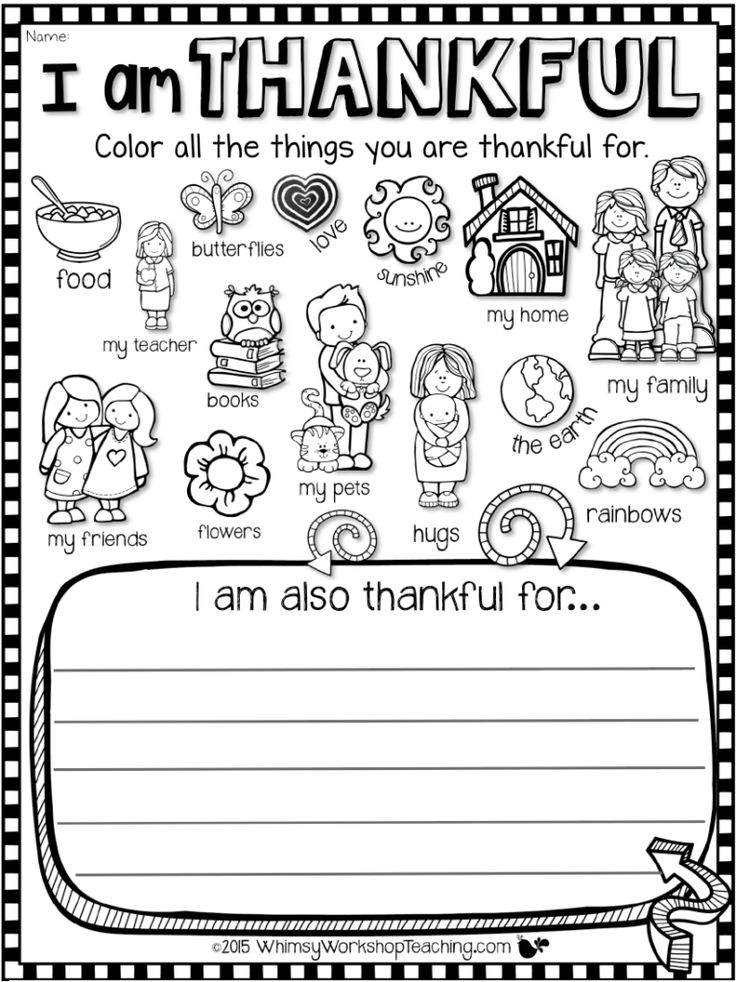
7. Make gratitude part of your day, every day
Many families choose to take turns expressing their thanks at the dinner table, others make the time before bed. Whatever it is, keep it regular. Doing this daily will help your child get into the routine to practice thinking about gratitude throughout their day as they get closer to the time when it’s their turn to say their piece.
This article was originally published in 2018 and has been updated for timeliness.
- Tweet
- Pin
10 Easy Ways to Teach Your Child Gratitude
- Training
- Exercises
- Awards
- Reports
- Payment nine0004
- Entrance
- Registration
HomeBlog for parents Upbringing
05/19/2014, 12:29
Gratitude can bring joy to life in almost any situation.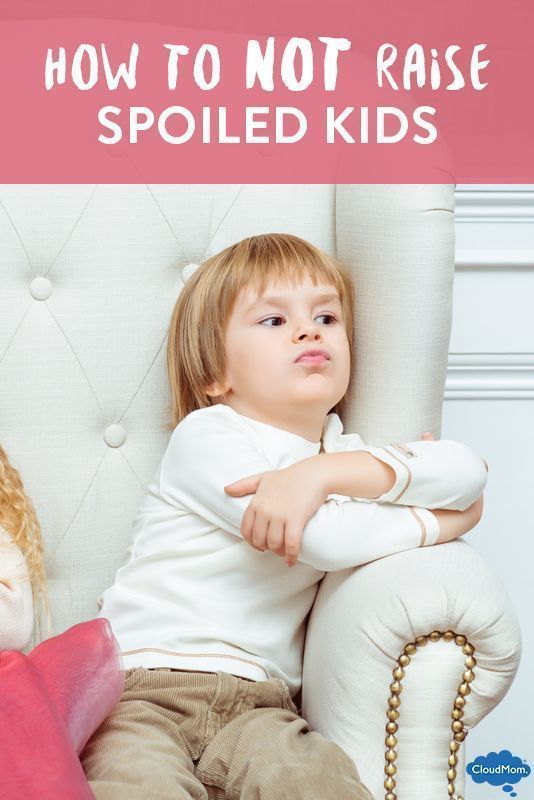 But the feeling of gratitude does not come by itself, it is, surprisingly, brought up in us by adults. Take a little family time to teach your child such an important life value and the ability to give thanks, your efforts will pay off handsomely!
But the feeling of gratitude does not come by itself, it is, surprisingly, brought up in us by adults. Take a little family time to teach your child such an important life value and the ability to give thanks, your efforts will pay off handsomely!
- Share with your child those to whom and for what you yourself are grateful. You may think that the child is too small for adult conversations. But talking to family members expressing gratitude to any of them, or talking about how grateful you feel for a colleague, teacher, coach, or whoever it is, is never too early to have in front of a child. nine0004
- Make your own or send thank you cards. Let the child observe how you express your gratitude.
- Play the game "How would you feel without it." The game can be played at any time, and the worse your mood or your child’s mood is, the better. Just ask the child how he would feel if he did not have any things or opportunities. Children are surprised at how varied life really is and how ambiguous are precisely those things, events and opportunities that we consider “normal”.
 You may enjoy discussing how other people live without the same things and experiences that you have. These word games teach us to appreciate what life gives us. nine0004
You may enjoy discussing how other people live without the same things and experiences that you have. These word games teach us to appreciate what life gives us. nine0004 - Create a Thank You Bank. Decorate any jar, put it in a special place and put a few sheets of writing paper and a pencil next to it. You can drop notes into the jar with the names of those you thank, or with the name of the object, event, opportunity for which you thank someone or even life. A child can lower small objects-symbols into a jar, which he endows with his gratitude to someone and for something. And once a month, arrange a “Gratitude Evening”, when the bank is opened and each of the family members remembers when, whom and for what he thanked. nine0004
- Make a Thank You Tree or Thanksgiving Wreath. On each large leaf of this tree or wreath, write down what you have and what you especially appreciate. A tree or a wreath will serve as a reminder of what you already have, as well as show you how many things that you are also grateful for, appear in you over time.
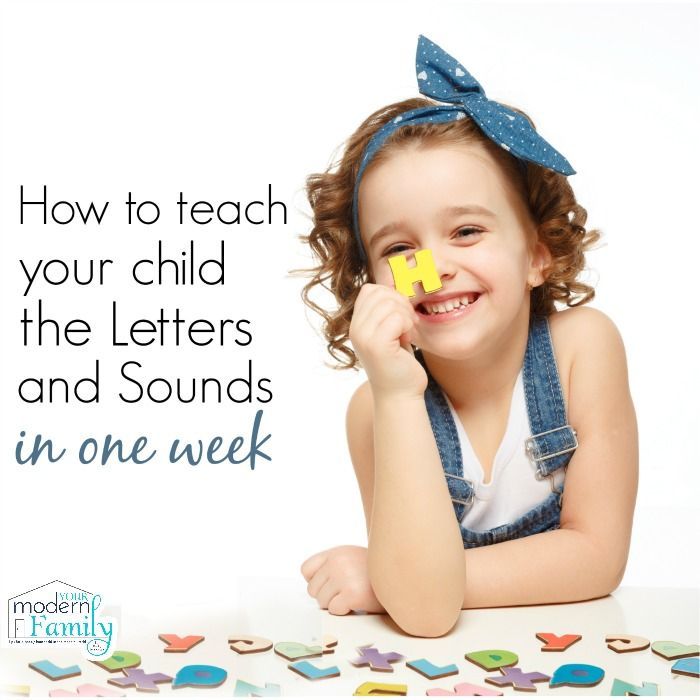 For them, you can make leaves of a different color. Involve the child in the process of filling the leaves. It is important that the child does not remain alone in his actions, so that he sees the importance of gratitude for members of his family. nine0004
For them, you can make leaves of a different color. Involve the child in the process of filling the leaves. It is important that the child does not remain alone in his actions, so that he sees the importance of gratitude for members of his family. nine0004 - Write a list of ways your family members can be grateful. Discuss with your child how you can express your gratitude: draw a picture? Give a gift? Express care, help with household chores, do something nice? Teach your child to accompany all these symbols with words of gratitude, but do not cross the line beyond which the symbol of gratitude becomes a gesture of "I-do-you-do-not-owe anything more." This line is thin, and in order not to cross it, gratitude must come from a pure heart. nine0004
- Read books about gratitude or write your own Thank You Book. When you and your child have gained sufficient experience in understanding the feeling of gratitude in different situations, ask the child, “If there was a book about Gratitude in the world, what would it be like, what would be written in it?”.
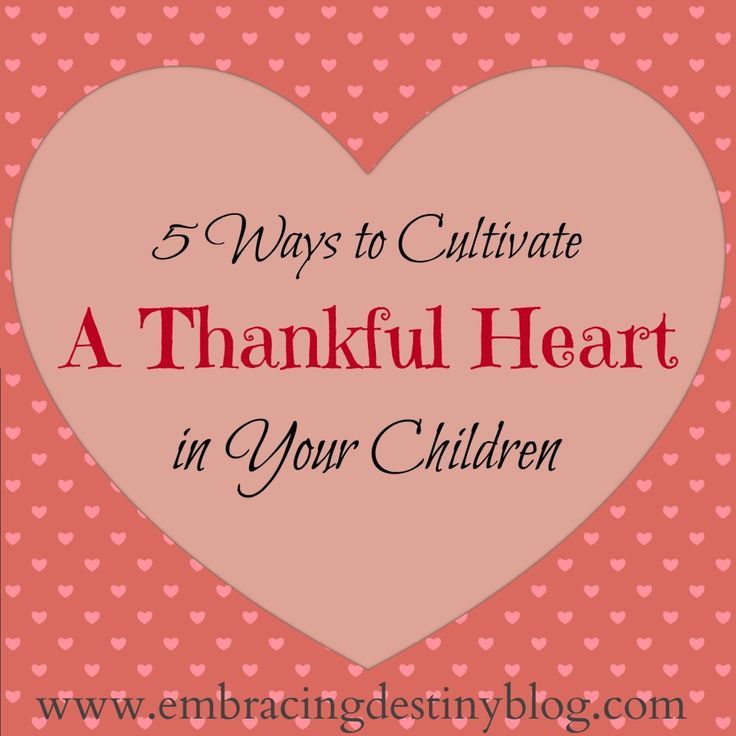 It is good to create such a book together with the child's friends.
It is good to create such a book together with the child's friends.
- Draw and write down things you are grateful for.
- Make a collage of photos of things, events, people for which you are grateful in life. Such a collage can be timed to coincide with the very "Evening of Gratitude" when you will open your jar with notes and symbols. nine0004
- Keep a special journal (notebook). Add to it notes about something new for which you are grateful. Do not forget to thank yourself with your child for helping yourself to achieve new successes. You will see, this simple procedure will increase children's self-esteem and add a sense of happiness to him!
Like it? Share with friends:
Tags:
#for parents
Read also nine0021
An individual child development program: what is it and where can I get it?
harmonious development
Preparing for school: everything you wanted to know but were afraid to ask
Winter fun for kids nine0021
What a first grader needs to go to school: make a list
- Blog for parents
- Help
- User agreement nine0004
- about the project
Copyright © 2023 IQsha.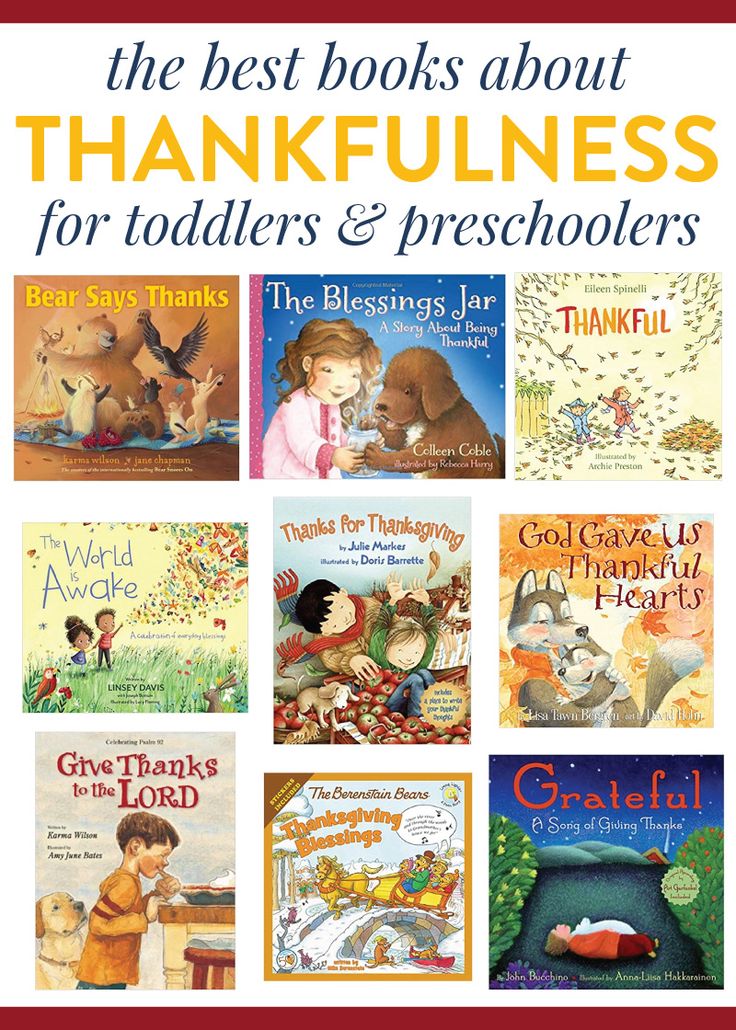 ru All rights reserved. The site is owned by Mediartis LLC
ru All rights reserved. The site is owned by Mediartis LLC
Winner of the International Correspondence Competition "Hope of the Planet" under the auspices of the International Slavic Academy of Sciences, Education, Arts and Culture (ISA).
Seven ways to teach a child to be grateful
Komsomolskaya Pravda
House. FamilyMom and babyMom and baby: Education and development
Anna GERASIMENKO
August 22, 2021 23:57
I try, I do everything for him, I buy everything for him, and he won’t even say thank you!” Moms and dads often complain. And children simply do not always know how to appreciate what they do for them, and if they do, they do not know how to express their gratitude. You can help them learn to be grateful by following these 7 tips:
1. Describe this feeling
The child doesn't know what it's like to be grateful. The task of parents is to teach the child to recognize emotions.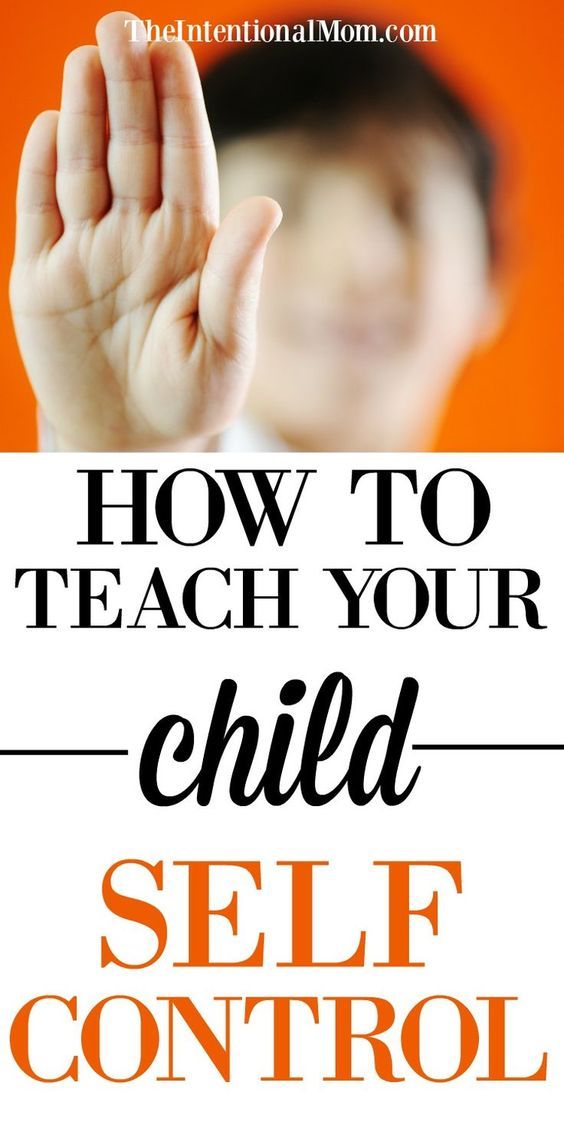 Tell me how to respond if you want to say "thank you". Catch the moment when the baby can feel it and pay his attention. In addition, the usual rule of "saying thank you" has not been canceled either. Don't expect your child to learn everything the first time. Be patient and keep practicing.
Tell me how to respond if you want to say "thank you". Catch the moment when the baby can feel it and pay his attention. In addition, the usual rule of "saying thank you" has not been canceled either. Don't expect your child to learn everything the first time. Be patient and keep practicing.
2. Explain with an example
Our children don't understand how lucky they are. That their childhood is filled with toys, gadgets, opportunities, interesting pastimes. Annoyed to say "you don't appreciate your happiness! I didn't have anything at all in my childhood" - it's like saying nothing. The child does not believe in the word. He does not understand how it is when there is NOTHING. But if you and your child collect a bag of toys or buy a pack of notebooks and pencils for children in an orphanage, because they don’t have it, it will be much clearer. Do not scare with scary stories about orphans and beggars, no, just show (using books, films, stories as an example) that not all people have so many opportunities, and many children dream of such a train, or such a doll, or a trip to the sea with parents.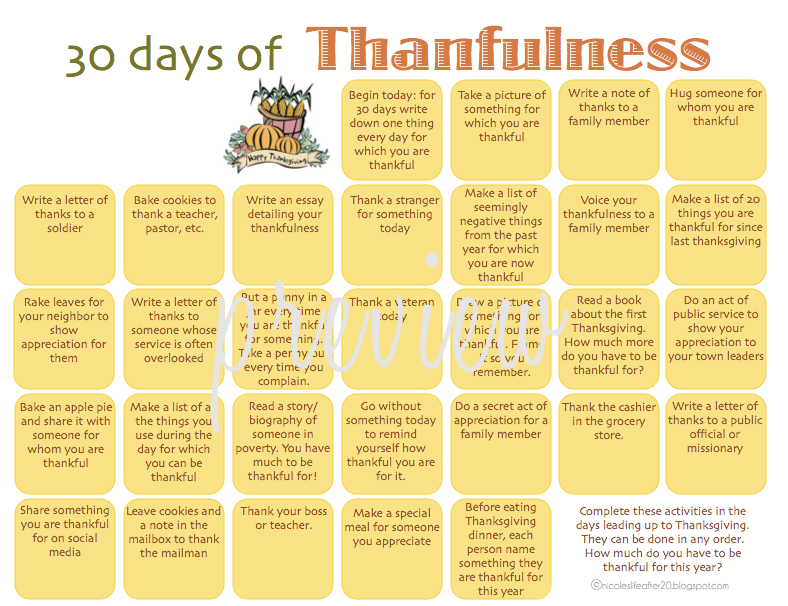 That is why we are glad that we have this train! We appreciate it, we are grateful for it. nine0021
That is why we are glad that we have this train! We appreciate it, we are grateful for it. nine0021
3. Don't buy everything
This is probably one of the most important points. If a child has everything, if he even has no time to dream, if the child cannot answer the question “what do you want for your birthday”, then he “does not have time” to evaluate. He gets everything and is used to taking it for granted. So stop bombarding your child with toys! Show that any thing costs money. And money should be spent wisely and on what is really really needed. How do you know if a child really needs something? He will talk about this thing every day, dream and remember. And if he does, he will feel joy and gratitude! And that's exactly what we were after! nine0021
4. Don't forget to say "thank you" yourself
Children do what their parents do. Moreover, children learn to feel what their parents feel. Grandma brought you a pie or apples - thank you from the bottom of your heart, and don't just bring it to the kitchen.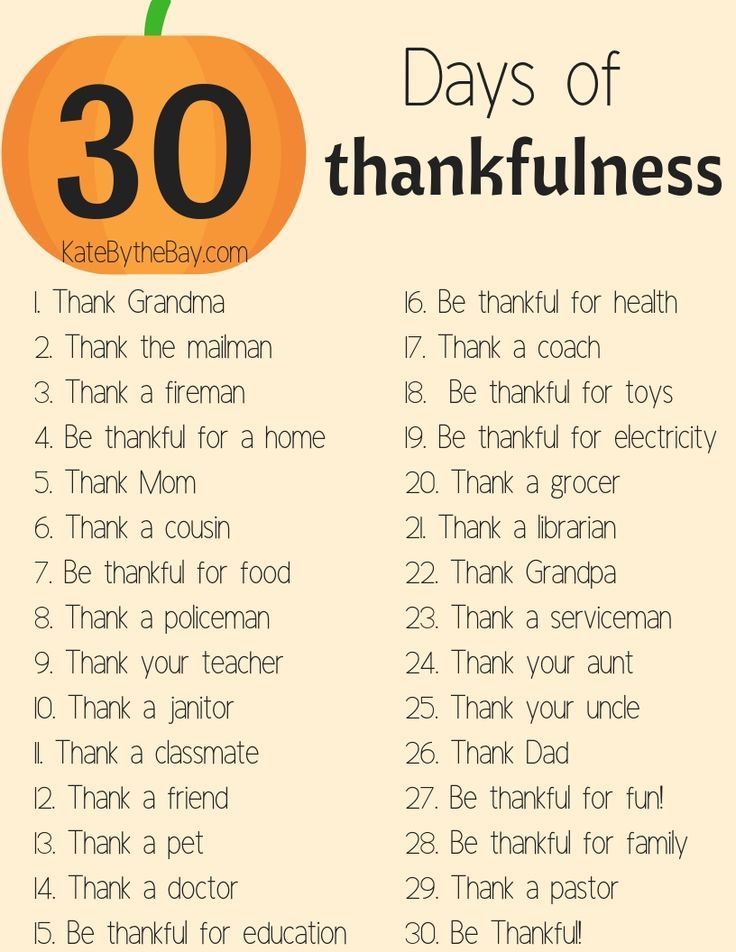 The kid himself prepared a soup of sand and mud for you - say "thank you, it's very tasty!" They gave you a seat in the subway - thank you with a smile. The child will "absorb" and do the same.
The kid himself prepared a soup of sand and mud for you - say "thank you, it's very tasty!" They gave you a seat in the subway - thank you with a smile. The child will "absorb" and do the same.
5. Show the value of life
You cooked soup, took your child to kindergarten or school, helped with homework, ironed uniforms, bought warm boots… From our adult point of view, all this is very valuable! And the child does not see anything interesting in this. Show your heirs the side of life that is interesting for them - amusement parks, animals in the zoo, play pirates in the yard, flood the hill in winter, buy a hamster, go to the station and just look at the trains, count the wagons, take the child to your job, tell us about the incredible animals, take with you on a trip! When a child knows that there are so many interesting things in life, he understands how valuable it is. You point to moments to be grateful for, things that make us happy. nine0021
6.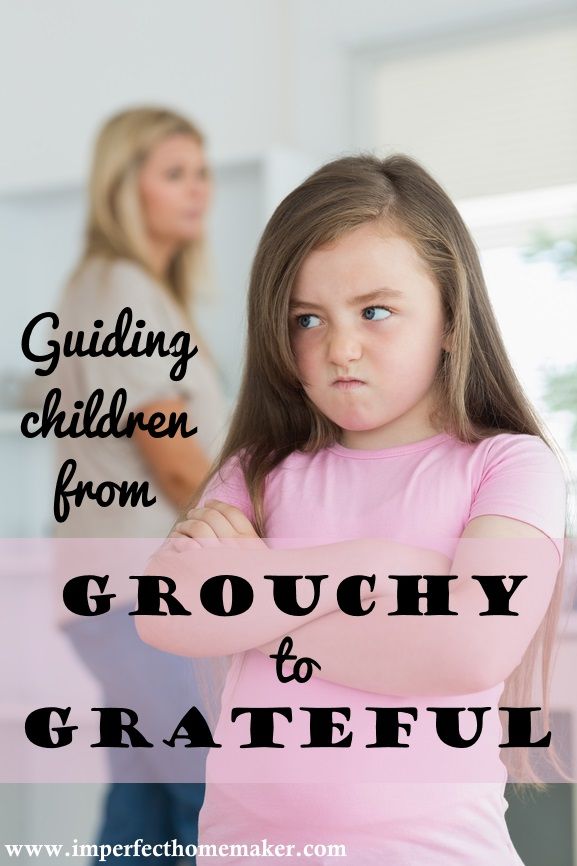 Magic word
Magic word
This "technique" has been working great since the time of our great-grandmothers. Until Vanya says the "magic word", kefir will not appear on his table. Sometimes only the rules in the game work.
7. It's nice to give thanks
Don't force your child to be grateful, don't get annoyed when he doesn't say "thank you" or doesn't notice your efforts. So you will only awaken in him a feeling of guilt, the child will feel bad, because he does not feel gratitude. And for this, he certainly won’t say “thank you” to you, and in the future he will do it “under duress”. Why do you have such false joy? Rather, tell your child that when you feel gratitude, it makes you happy. It's nice to be thankful! Who wants to deprive themselves of the opportunity to be a little happier? nine0021
Try it! And thanks for reading our article!
Age category of the site 18+
The online publication (website) is registered by Roskomnadzor, certificate El No.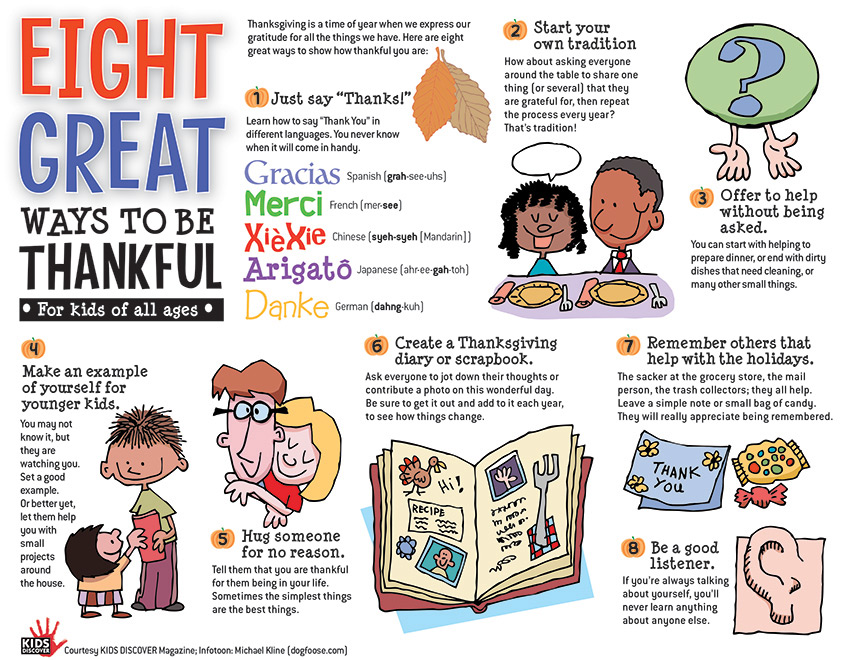 FS77-80505 dated March 15, 2021.
FS77-80505 dated March 15, 2021.
EDITOR-IN-CHIEF OF THE SITE - KANSKY VIKTOR FYODOROVICH.
THE AUTHOR OF THE MODERN VERSION OF THE EDITION IS SUNGORKIN VLADIMIR NIKOLAEVICH.
Messages and comments from site readers are posted without preliminary editing. The editors reserve the right to remove them from the site or edit them if the specified messages and comments are an abuse of freedom mass media or violation of other requirements of the law. nine0021
JSC Publishing House Komsomolskaya Pravda. TIN: 7714037217 PSRN: 1027739295781 127015, Moscow, Novodmitrovskaya d. 2B, Tel. +7 (495) 777-02-82.
Exclusive rights to materials posted on the website www.kp.ru, in accordance with the legislation of the Russian Federation for the Protection of the Results of Intellectual Activity belong to JSC Publishing House Komsomolskaya Pravda, and do not be used by others in any way form without the written permission of the copyright holder.
